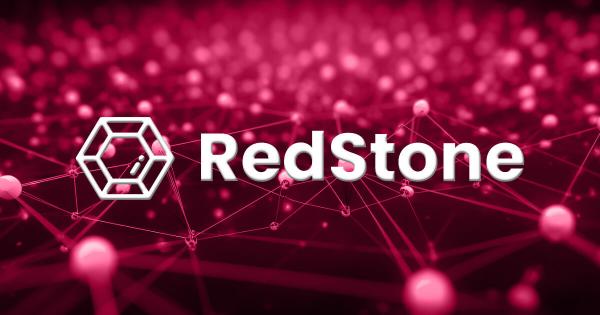The focus on blockchain Oracle protocols, such as Chainlink (LINK), has been growing, reflecting the rapid adoption of smart contracts. These Oracle protocols are vital to the crypto industry, acting as channels for external data that drive the automation of smart contracts.
As the worlds of DeFi and traditional finance converge, the significance of oracles becomes increasingly pronounced. RedStone emerges as a pioneering force in response to this surging demand for Oracle solutions.
RedStone harnesses the decentralized Streamr network to give users dependable data while eradicating superfluous on-chain data transmission inefficiencies. Redstone is a steadfast provider of reliable data feeds, servicing over 40 blockchain platforms, including Ethereum virtual machine (EVM)-compatible network blockchains and non-EVM networks.
In a recent interview with CryptoSlate, CEO and founder Jakub Wojciechowski discussed what the company has been up to in recent years and what makes RedStone different from other Oracle providers.
How RedStone is disrupting the status quo
With the increased demand for decentralized finance infrastructure, RedStone offers a modular design allowing on-chain data efficiency. Its innovative data availability layer stores all the data; only what is needed would be fetched on-chain. This optimizes cost and efficiency.
Said Wojciechowski:
“RedStone is revolutionizing the oracle space by eliminating the inefficiency of unnecessary on-chain data pushing and leveraging the decentralized Streamr network for reliable data delivery to users. With the added innovation of token incentives, it ensures data integrity and service continuity, while also utilizing the Arweave blockchain for cost-effective, permanent data storage.”
The innovative design also allows the infrastructure to broadcast multiple assets frequently to any EVM layer-1 or Layer-2 network. This means broad compatibility with several smart contract blockchains.
Unlike the traditional push oracle model, which is not scalable and comes with a higher cost for each chain deployment, the RedStone approach enables it to provide affordable and reliable data feeds for more than 40 chains.
Stablecoin support
RedStone also plays an integral role in supporting Aave’s stablecoin, GHO. The stablecoin ecosystem generally relies on oracles, especially for the algorithmic stablecoins, as their stability depends on price infrastructure aggregating information from several sources.
“Oracles play a pivotal role in the stablecoin ecosystem, especially for algorithmic and decentralized stablecoins that mint against volatile cryptocurrency reserves,” Wojciechowski said. “When the collateral-to-loan ratio falls below a certain threshold, oracles trigger liquidations to maintain system solvency, making their reliability and accuracy crucial for the stablecoin’s peg to its intended value.”
For Aave GHO, RedStone integrates data from multiple DEX pools to facilitate stablecoin integration. Wojciechowski also noted that RedStone remains developer-friendly by offering three consumption models for developers.
The post RedStone redefines blockchain oracle scene with innovative design appeared first on CryptoSlate.








